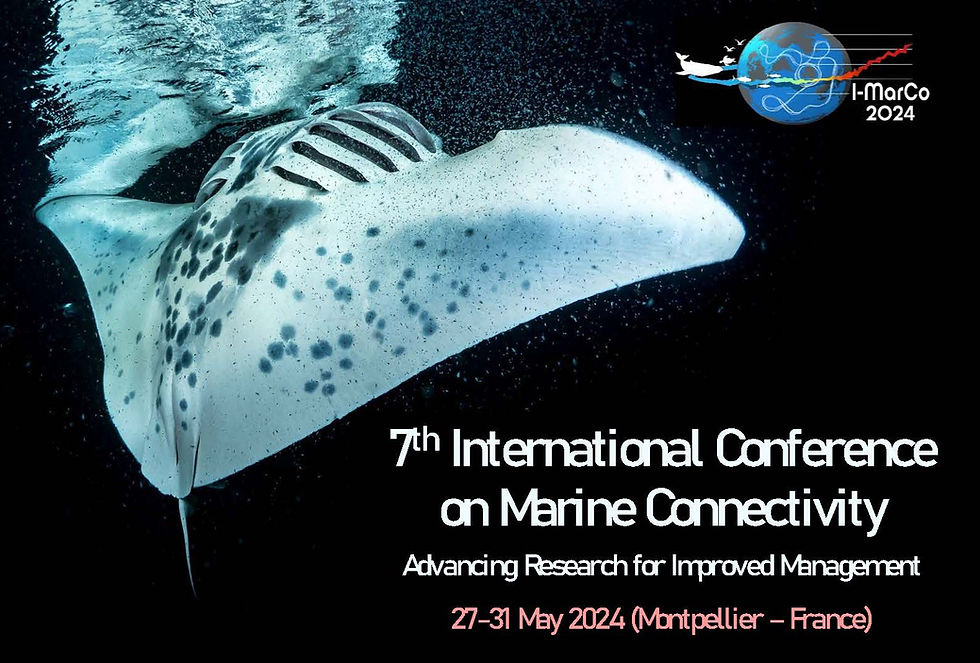Marine Functional Connectivity in a Changing Climate: past, ongoing & future trends
- Sea-Unicorn
- Jun 4, 2024
- 2 min read
Updated: Jan 2
On May 27th 2024, as part of the International Marine Connectivity conference (iMarCo 2024), Katell Guizien (OOB/CNRS - France), Manuel Hidalgo (IEO/CSIC - Spain) and Maria Beger (Univ. of Leeds - UK), held a full-day workshop designed to advance our ability to anticipate the evolution of MFC under different Climate Change scenarios.

This in-person workshop, organised jointly by SEA-UNICORN and the O-CONNECT working goup of the French GDR OMER, gathered 44 experts from 15 countries (among which >25 active SEA-UNICORN members) to discuss and draft a roadmap towards projecting MFC in a changing climate.

The meeting started with the presentation of the evolution of ocean-related state variables with climate change reported in IPPC AR6 and SR Ocean (temperature, sea level, precipitation, pH, oxygen, nutrients, ice cover), pointing out the absence of report on changes in ocean currents, and highlighting a few studies projecting MFC changes in the face of climate change, mainly through the effect of temperature rise and ocean acidification.

The workshop continued in the morning with 3 brainstorming sessions in small groups (of 45 min. each) to identify null hypotheses related to predictions of MFC evolution with changes in different 3 sets of ocean state variables :
1) temperature and oxygen
2) sea level and ocean circulation
3) primary production and pH
*
For each set of variables, the question of scalability of changes from global to local was posed, together with the question of the best tools to project changes into MFC and the potential for adaptation.

In the afternoon, each small group selected a few ocean-related variables and worked together, combining perspectives from different disciplines, to identify key research questions about MFC sensitivity to changes in these ocean-related variables. The main research questions identified deal with anticipating changes in species phenology, understanding the role of connectivity in the ability to adapt to the rate of change, and how to project changes across species.

For more information, visit: https://www.sea-unicorn.com/i-marco-2024/workshop-and-round-tables



Comments